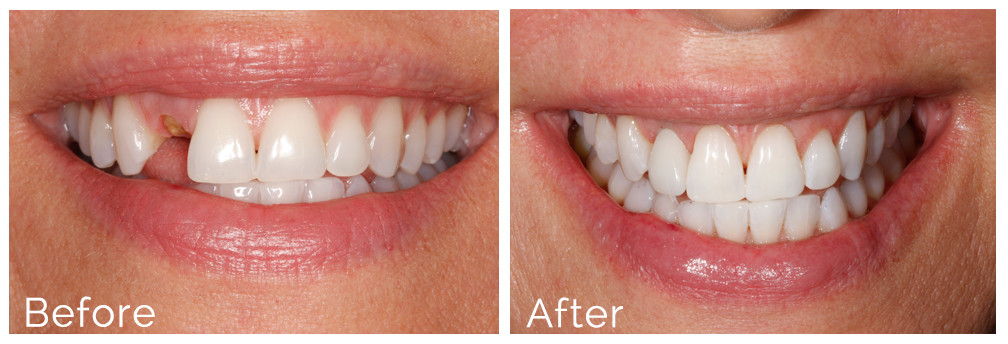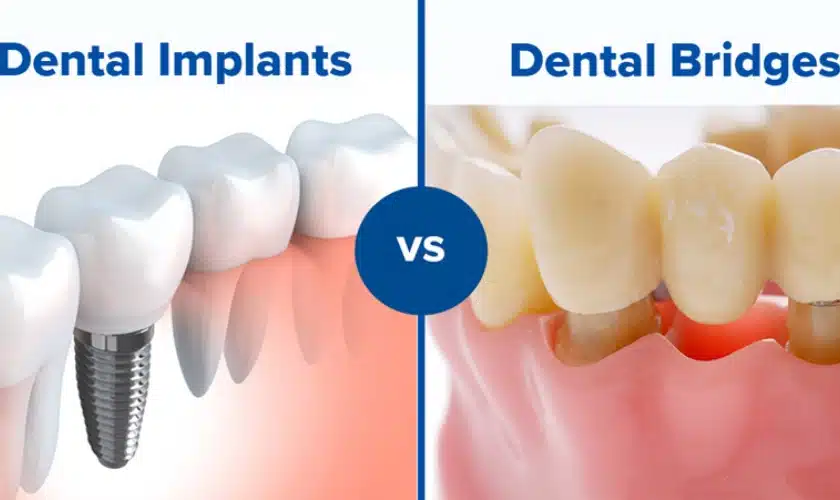Dental Sense for Beginners
Table of ContentsThe Best Strategy To Use For Dental SenseHow Dental Sense can Save You Time, Stress, and Money.The Greatest Guide To Dental SenseSome Ideas on Dental Sense You Need To Know
are clinical devices surgically dental implanted right into the jaw to restore an individual's capacity to eat or their look. They offer support for man-made (fake) teeth, such as crowns, bridges, or dentures. When a tooth is lost because of injury or disease, a person can experience complications such as fast bone loss, defective speech, or adjustments to chewing patterns that lead to pain.Dental dental implant systems contain a dental implant body and dental implant abutment and might additionally consist of an abutment fixation screw. Root canal procedure. The oral implant body is surgically put in the jawbone in place of the tooth's root. The dental implant joint is typically affixed to the implant body by the abutment fixation screw and extends via gums right into the mouth to support the attached fabricated teeth
Cigarette smoking might affect the healing procedure and decrease the lasting success of the implant. The healing process for the dental implant body might take a number of months or longer, throughout which time you typically have a short-term abutment in place of the tooth. the dental implant procedure: Thoroughly adhere to the dental health instructions offered to you by your dental copyright.
All About Dental Sense
Implant failing can result in the need for one more procedure to repair or change the implant system. Recovers the capacity to chew Brings back aesthetic appearance Helps keep the jawbone from reducing as a result of bone loss Protects the health of the bordering bone and gums Helps maintain adjacent (nearby) teeth stable Enhances lifestyle Damages to bordering natural teeth throughout dental implant positioning Injury to the surrounding cells throughout surgical procedure, such as sinus perforation Injury throughout surgical procedure (as an example, fracture of bordering jawbone) Insufficient function, such as feeling like the teeth do not attack with each other generally A sensation that the tooth is loose or turning in position arising from a joint screw loosening up Implant body failing (looseness of the implant body) because of systemic infection, which may be more probable in individuals with unrestrained diabetics issues because of local infection in bone and gums sustaining the implant body because of postponed recovery, which might be more probable in clients that smoke Difficulty cleaning up the gum tissues around the dental implant, resulting in inadequate dental health Unattended periodontal condition Post-surgical tingling because of nerve impingement or damage Constantly notify health care carriers and imaging specialists that you have oral implants before any kind of magnetic vibration imaging (MRI) or x-ray procedures.
FDA is not familiar with any kind of damaging events reported for MRI or x-ray treatments with dental implants. Oral implants systems are commonly made of materials that follow international agreement standards of the International Company for Standardization (ISO) or ASTM International. These requirements have details of what makes a safe material.

An oral implant is a framework that replaces a missing tooth. With screw-like tools, the doctor inserts an implant right into the jawbone, and it acts as a support for an artificial tooth, called a crown.
All About Dental Sense
Some individuals are not eligible for oral implant surgical procedure. It is for dental surgeons to run on individuals with: Visit Your URL acute illnessuncontrollable metabolic diseasebone or soft cells disease or infectionIf these issues are dealt with, an individual can have the surgical treatment. In, oral specialists avoid operating individuals with: If individuals with any one of the above go through oral implant surgery, there is a greater risk of the implant failing.

Oral dental implant surgical procedure is a personalized procedure. It's not the exact same for everybody. But the following provides a general summary of what you can anticipate your dental practitioner, dental surgeon, periodontist or prosthodontist to do: Put the implant operatively. Give you time to recover. Affix the blog post and last crown, bridge or denture.
Next off, your cosmetic surgeon will carefully position the oral implant into your jaw. Your cosmetic surgeon will reposition your periodontals and shut the cut with stitches. If your implant is near the front of your mouth, your dental professional will make a short-term tooth for you to wear up until you heal. This way, you won't have a space in your smile while you recoup.
Indicators on Dental Sense You Need To Know
Throughout the healing phase, your jawbone must fuse to the dental implant. This procedure can take anywhere from 3 to nine months.
As soon as your dental implant heals, your dentist can connect the abutment (little port article) and your final reconstruction (crown, bridge or denture). This usually takes about one hour to complete and may call for a second minor surgery. You shouldn't feel any kind of pain during your dental implant treatment due to the fact that your service provider will certainly use medicine to numb your periodontals.
Comments on “The smart Trick of Dental Sense That Nobody is Discussing”